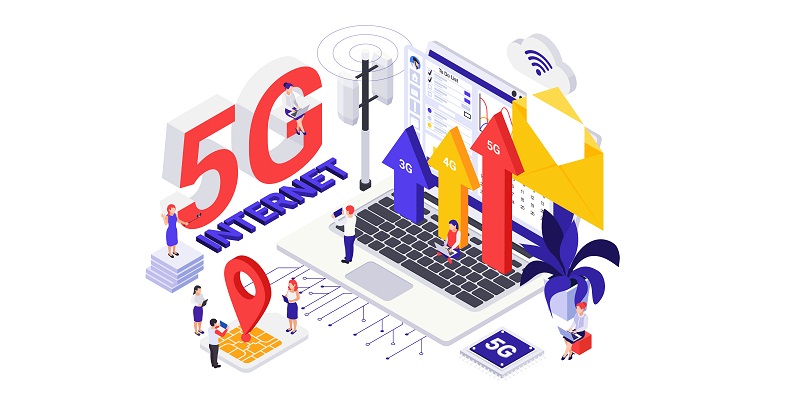In a world driven by technology, connectivity has become an essential part of our daily lives. The advent of 4G revolutionized data access, enabling faster internet speeds and reliable connections on smartphones. Now, with 5G on the horizon, we stand at the precipice of another groundbreaking leap. Promising even greater advancements in speed, capacity, and latency, 5G is set to transform how we connect and communicate. But what lies beyond 5G? Could 6G be the next step in speed enhancement or introduce groundbreaking changes that redefine connectivity as we know it?
Advancements of 5G
The advancements brought by 5G are set to be truly remarkable. Building upon the foundations laid by 4G, 5G aims to provide lightning-fast speed, significantly higher capacity, and incredibly low latency. With theoretical data rates of up to 20 Gbps, 5G will allow for seamless streaming, ultra-high-definition video calls, and lag-free gaming experiences. This next generation of connectivity will empower futuristic applications such as autonomous vehicles, smart cities, and the Internet of Things (IoT).
Possibilities of 6G
While 5G is still in its early stages of deployment, experts are already speculating about what will come after it. Will 6G continue the trajectory of speed enhancement, pushing the boundaries of what is possible? Or will it introduce groundbreaking changes that redefine connectivity altogether? The answer remains uncertain, but one thing is for sure: 6G has the potential to transform the way we connect, communicate, and experience the digital world.
How 4G operates
To understand the advancements that 5G and potentially 6G will bring, it is essential to delve into the workings of their predecessors. 4G operates on an all-IP network, which allows for faster data transmission and enhances the user experience. By transitioning from legacy circuit-switched networks to packet-switched networks, 4G capitalizes on the flexibility and efficiency of IP-based communication.
Features of 5G
While 4G operates primarily on lower frequency bands, 5G networks employ a more extensive spectrum range, utilizing higher frequencies to handle significantly higher data volumes. By harnessing millimetre-wave bands, 5G networks can achieve faster data rates and greater capacity than ever before. It is this vast bandwidth that will support the massive connectivity and bandwidth-hungry applications of the future.
Technologies employed by 5G
To achieve the lofty goals set by 5G, advanced technologies such as massive MIMO (Multiple-Input Multiple-Output), beamforming, and network slicing are employed. Massive MIMO significantly increases network capacity by using multiple antennas to transmit and receive data simultaneously. Beamforming focuses the signal between the base station and the user device, effectively increasing network strength and coverage. Network slicing allows operators to create virtual networks tailored to specific applications, enabling the efficient sharing of resources and optimizing network performance.
Benefits of low latency in 5G
One of the most significant advantages of 5G is its remarkably low latency. Latency refers to the time it takes for data to travel between devices, and low latency is critical for real-time applications such as augmented reality (AR), virtual reality (VR), and remote surgeries. By reducing latency to a matter of milliseconds, 5G will enable seamless and immersive experiences, where interactions between humans and machines occur in real-time.
Goals of 6G
Looking ahead to 6G, the goal is nothing short of pushing the boundaries of wireless connectivity. Industry experts envision mind-boggling data speeds, ultra-low latency, and massive device connectivity. The focus shifts towards enabling new applications and use cases that were previously unimaginable. 6G aims to unlock the full potential of emerging technologies like artificial intelligence, machine learning, and autonomous systems.
Envisioned features of 6G include
If 6G becomes a reality, we can expect ultra-high-speed data transmission, instantaneous downloads, and seamless 8K or even 16K video streaming. The potential for transformative applications is limitless. Imagine experiencing augmented reality (AI-enhanced virtual and augmented reality) with lifelike realism and precision. Imagine smart cities seamlessly integrating intelligent transportation, healthcare, and energy systems, all interacting in real time without human intervention. These are just some of the possibilities that 6G could bring to fruition.
Timeline for 6G development
While 5G is still being rolled out globally, the focus is shifting towards the development of 6G. Industry experts and researchers are actively exploring new technologies and networking paradigms that could make the vision of 6G a reality. Although a definitive timeline for the release of 6G remains uncertain, it is expected to be developed and commercially available by the year 2030. Until then, the world will continue to witness the evolution of connectivity as 5G unfolds its transformative capabilities.
As the 4G revolution paved the way for faster internet speeds and reliable smartphone connections, the advent of 5G promises even greater advancements in speed, capacity, and latency. Looking beyond 5G, 6G could potentially redefine connectivity with mind-boggling data speeds, ultra-low latency, and massive device connectivity. With this next generation of connectivity, we can envision a future where seamless and immersive experiences become the norm. While the timeline for 6G’s release remains uncertain, ongoing research and exploration by industry experts and researchers offer glimpses into the possibilities that lie ahead. The 6G revolution is set to propel us into a digital era where technology transforms the way we live, work, and interact.

